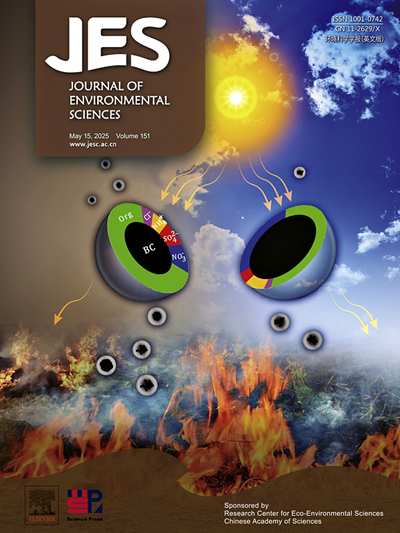十年来来源和气溶胶成分的变化:对快速发展的特大城市清洁空气行动计划的启示
IF 5.9
2区 环境科学与生态学
Q1 ENVIRONMENTAL SCIENCES
引用次数: 0
摘要
本文分析了在中国西南不断扩大的特大城市成都多个站点测量的长期(2007-2016)颗粒物数据集。利用大气污染防治行动计划(APPCAP)中颗粒物化学成分和污染源分配的变化趋势,评价和评价大气污染防治行动计划(APPCAP)中特定污染源控制政策和措施的有效性。颗粒物浓度显著降低,大部分气溶胶组分与颗粒物同步变化。采用先进的三因素分析模型,确定了3个地点的6个污染源:燃煤、机动车、地壳尘埃、水泥、硫酸盐、硝酸盐和次生有机质。次生污染源主要为次生有机碳(SOC)、硫酸盐、硝酸盐和铵(SNA)。包括水泥和地壳尘埃在内的粉尘是重要的主要来源。令人鼓舞的是,APPCAP实施后,燃煤得到了明显控制。中部站点的机动车、硝酸盐和有机碳贡献较大,北部和东部站点的硫酸盐、燃煤和扬尘贡献较大。许多证据表明,成都大气的物理化学属性发生了重大变化。硝酸盐比例的上升和大气环境从贫氨到富氨的转变,突出了下一阶段颗粒物控制的必要性,重点是对nh3和NOx的管理。中国的APPCAP可以为广大发展中国家和其他城市化和工业化地区平衡社会发展和环境保护提供有益的经验。本文章由计算机程序翻译,如有差异,请以英文原文为准。

Variations of source and aerosol composition over ten years: Implications for Clean Air Action Plan in a rapidly developing megacity
A long-term (2007–2016) particulate matter dataset measured at multiple sites in Chengdu, an expanding megacity in southwest China, was analyzed. The trends of particulate chemical compositions and source apportionment were used to evaluate and review the effectiveness of source-specific control policies and measures in Atmospheric Pollution Prevention and Control Action Plan (APPCAP). The concentration of particulate matter decreased significantly, and most aerosol components changed synchronously with particulate matter. The results of advanced three-way factor analysis model suggested that six sources were resolved at three sites: coal combustion, vehicle, crustal dust, cement, sulfate, nitrate and secondary organic matter. Secondary source, including secondary organic carbon (SOC), sulfate, nitrate, and ammonium (SNA), was always the main pollution source in this region. Dust, including cement and crustal dust, was important primary source. Encouragingly, coal combustion had been significantly controlled after APPCAP. The central site represented the higher contribution of vehicles, nitrates and SOC, while north and eastern sites showed the higher contribution of sulfate, coal combustion and dust. Many evidence points to substantial alterations in the physicochemical attributes of Chengdu's atmosphere. The rising proportion of nitrate and the transition of the atmospheric environment from ammonia-poor to ammonia-rich conditions highlight the necessity for the next phase of particulate matter control to focus intensively on the management of NH₃ and NOx. China's APPCAP could provide useful experience for vast developing countries and other urbanizing and industrializing regions to strike a balance between social development and environmental protection.
求助全文
通过发布文献求助,成功后即可免费获取论文全文。
去求助
来源期刊

Journal of Environmental Sciences-china
环境科学-环境科学
CiteScore
13.70
自引率
0.00%
发文量
6354
审稿时长
2.6 months
期刊介绍:
The Journal of Environmental Sciences is an international journal started in 1989. The journal is devoted to publish original, peer-reviewed research papers on main aspects of environmental sciences, such as environmental chemistry, environmental biology, ecology, geosciences and environmental physics. Appropriate subjects include basic and applied research on atmospheric, terrestrial and aquatic environments, pollution control and abatement technology, conservation of natural resources, environmental health and toxicology. Announcements of international environmental science meetings and other recent information are also included.
 求助内容:
求助内容: 应助结果提醒方式:
应助结果提醒方式:


